Fall 2022
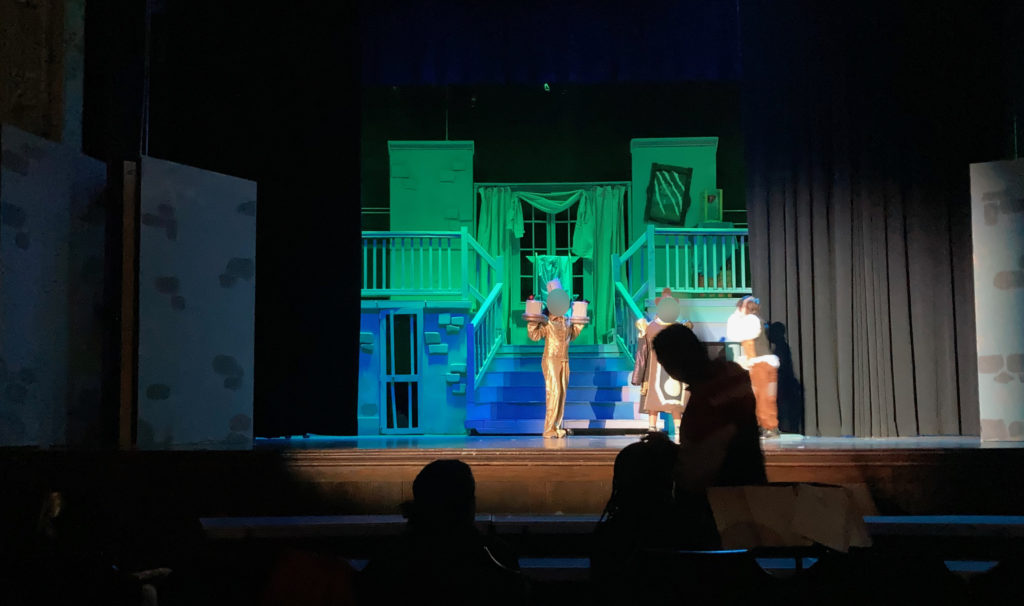
This middle-school production provided big growth facilitating design and production for the set, practice with education, and a second year with the Backstage Crew school club. Working with a new director on his first ever production gave me a chance to establish a design that worked well for students learning curve, production skills and essentially no build abilities–additionally, allowing me a project room for managing middle school kids during off-school hours. However, the previous year had established that this district’s theater performances had more developed productions, thus setting a standard that still manifested stress and big expectations both from myself and for the show. Following the previous season’s high school performance of Les Miserables, the middle school principle had the excitement and enthusiasm for a similar if not bigger success–understandable so, for during the Les Mis premier night introduction, the district was declared as an arts school. A measly set design of painted flats would not satisfy that statement.
For the initiation, we started working with the measuring tape, marking wood for cuts, and fastening two blocks together. Using a power tool to push in a screw seems easy until you must explain a basic technique of using the tool, and patiently watch the screw slaughter–screw heads destroyed beyond use. When the painful metal scream disappeared and practice screws were successfully set into wood, the students were ready to for the next stage. I introduced the plans and the expectation for this set–we wanted a set large enough to feel like a village and a castle and provide room for different scenes and reducing transition efforts or stage setting for very little management. We talked about the parts, their terms and functions such as a platform and its anatomy, flat styles, and the difference between props and sets. After that lesson, we set out for the first platform. The raising of this single piece was a joyous occasion and set the mood and motivation, especially when they learned the other two platforms were two feet taller!
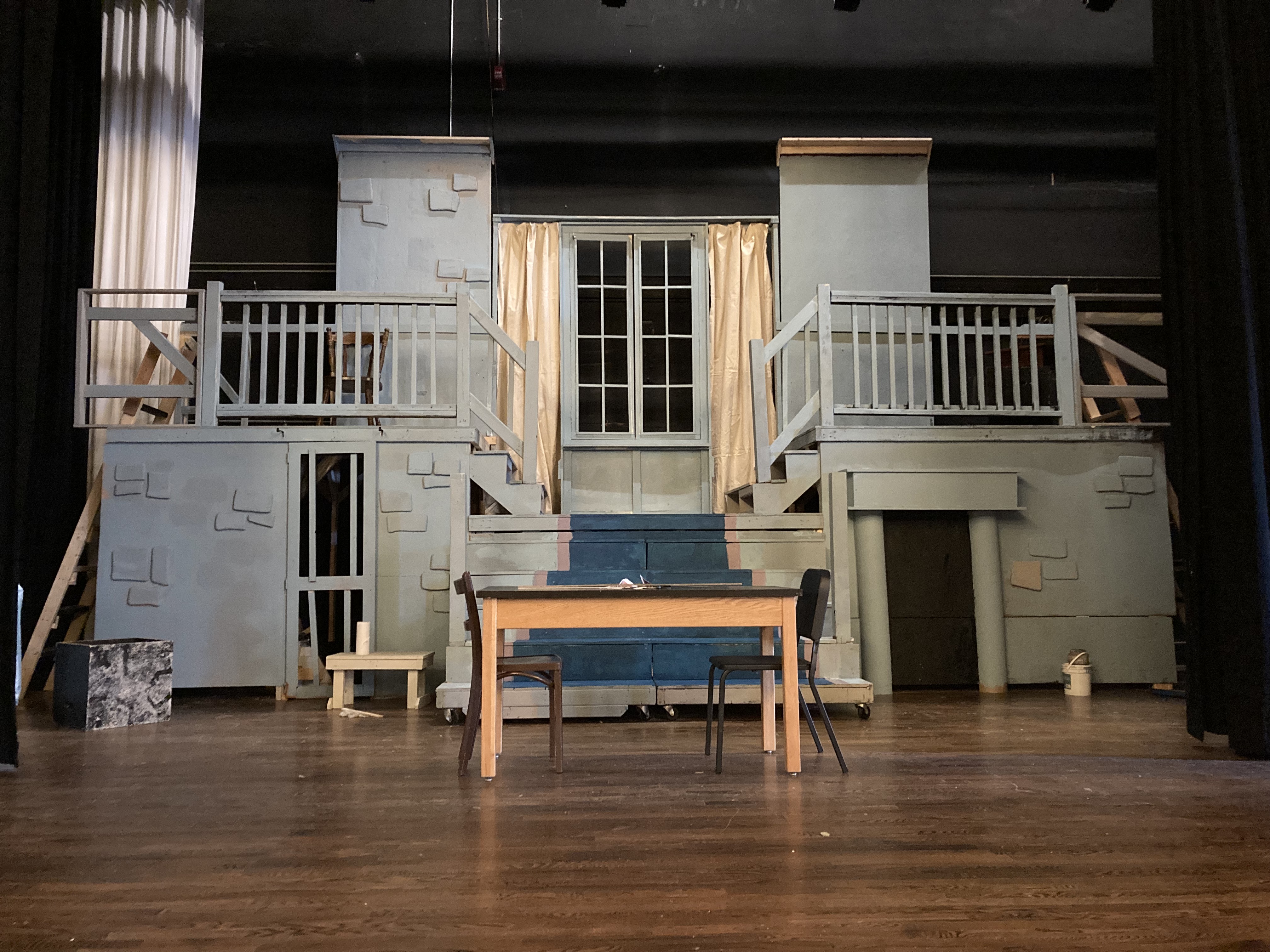
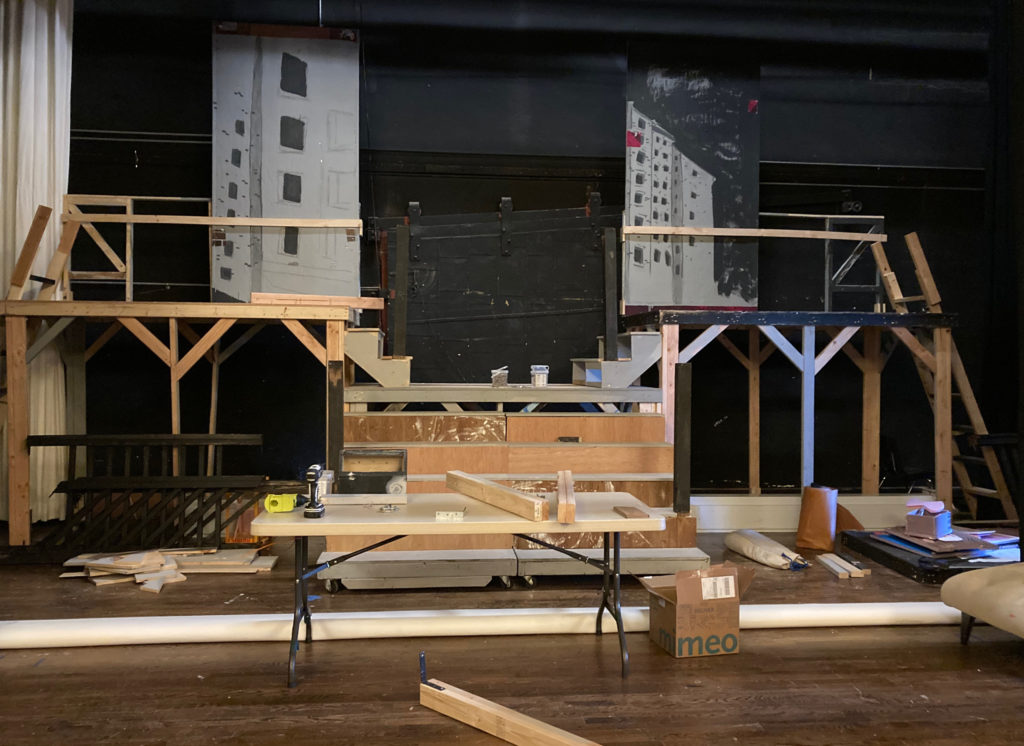
The parts generally came from previous shows:
– the window from Peter Pan;
– the platforms from Peter Pan and Les Mis;
– ladders for each off stage entrance onto the platforms from Les Mis;
– center stairs combined two stairs from Les Mis;
– rails and posts from my own refurbished deck.
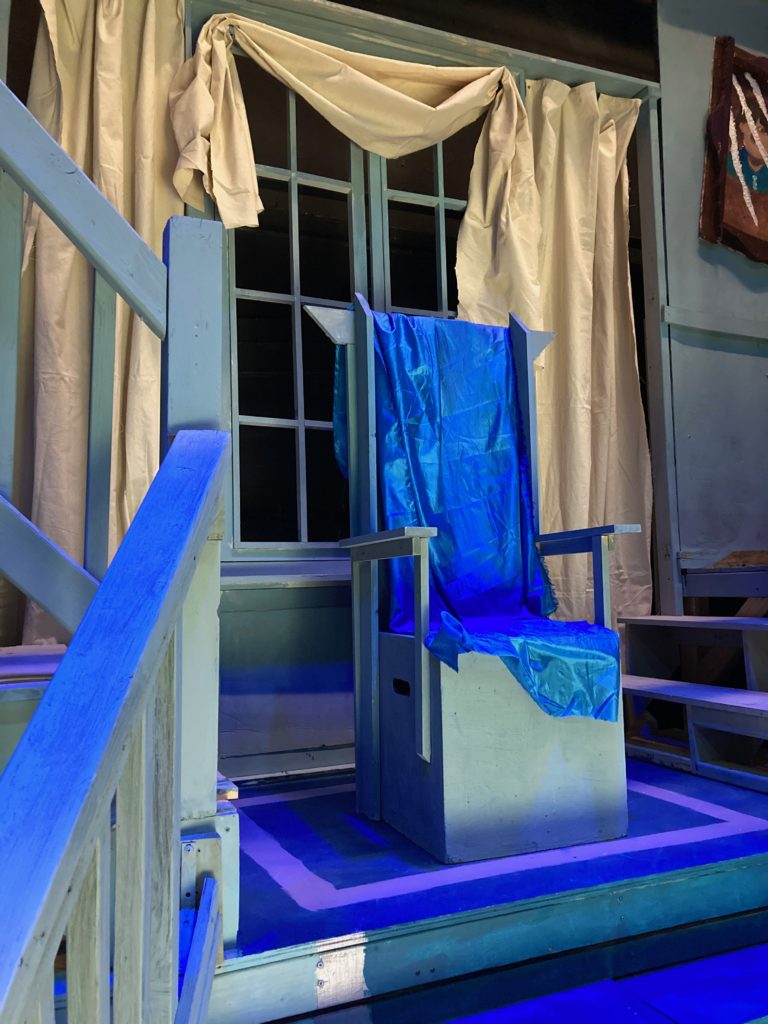
Students had to construct new items:
– Chip’s cart;
– the master’s chair;
– a fireplace;
– prison chamber.
The greatest effort came from the details:
– the rose and its case;
– the portrait destroyed by rage;
– the village.
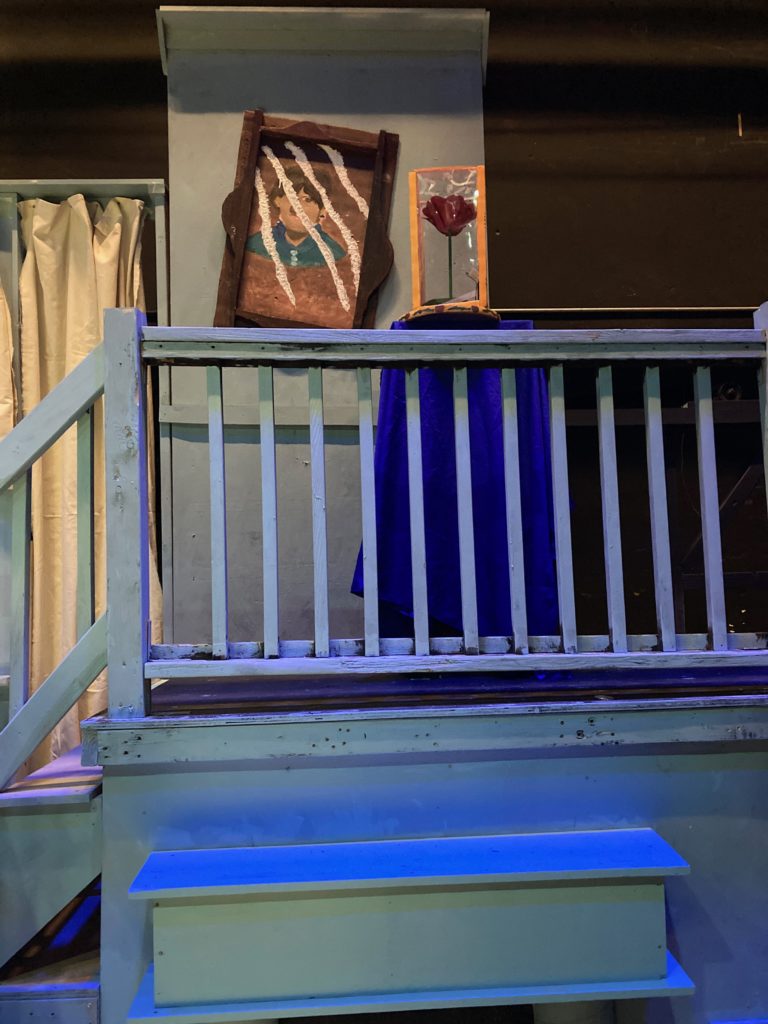

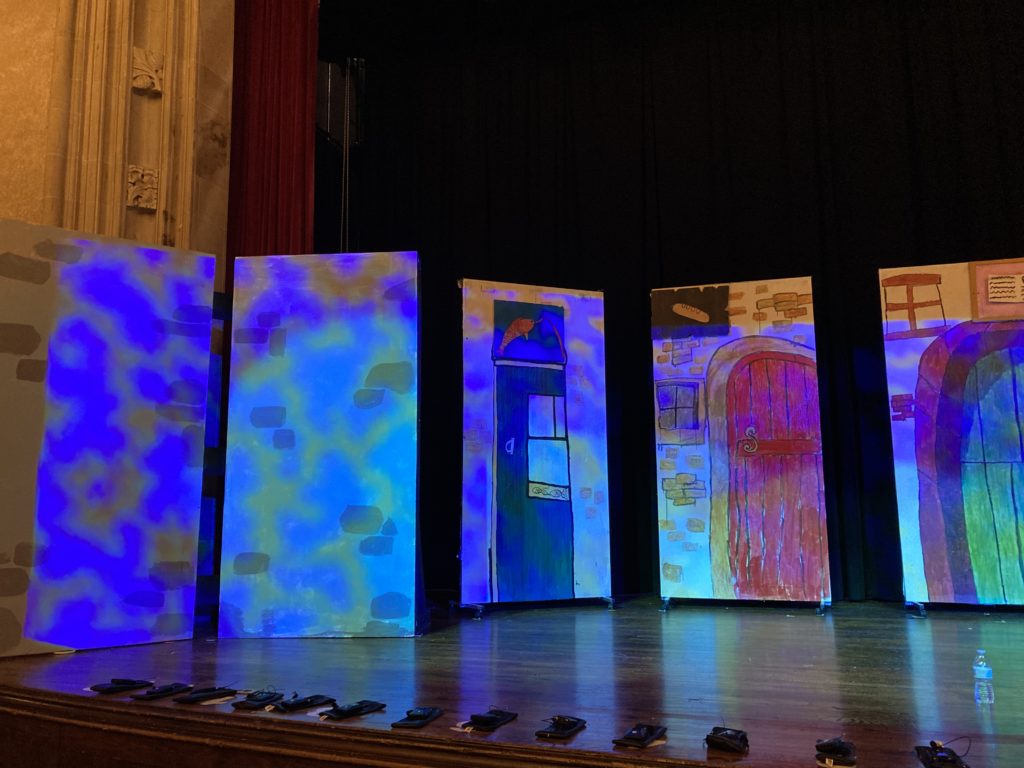


The three images illustrates the opening scene with the village flats. During this pause, the flats on the extreme ends should have been closed to reveal their respective village door as almost demonstrated in the following image. These two constructions are explained later.
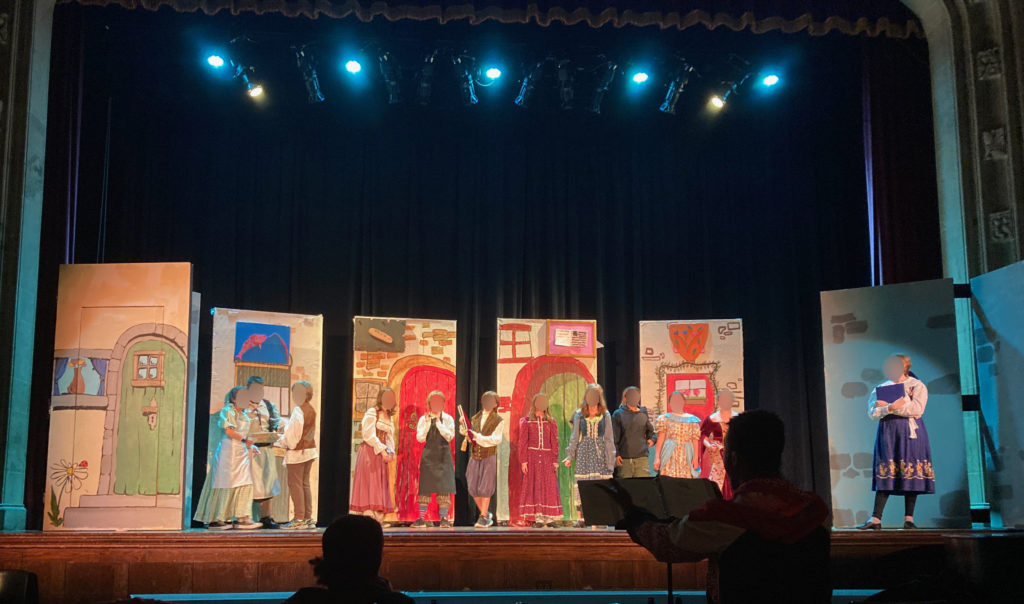
With Backstage Crew
As mentioned earlier, the high school club also worked on this set which alleviated some of the concern meeting the deadline; plus, more experienced hands provided for a much more complex set. They have proved themselves capable of building reliable structures with solid executions. I provided them a task based on a small-scale model. Their job was to construct a multi-scene standard size flat of four by eight feet. The final product had to stand on its own and easily change into one of the three set backdrops.
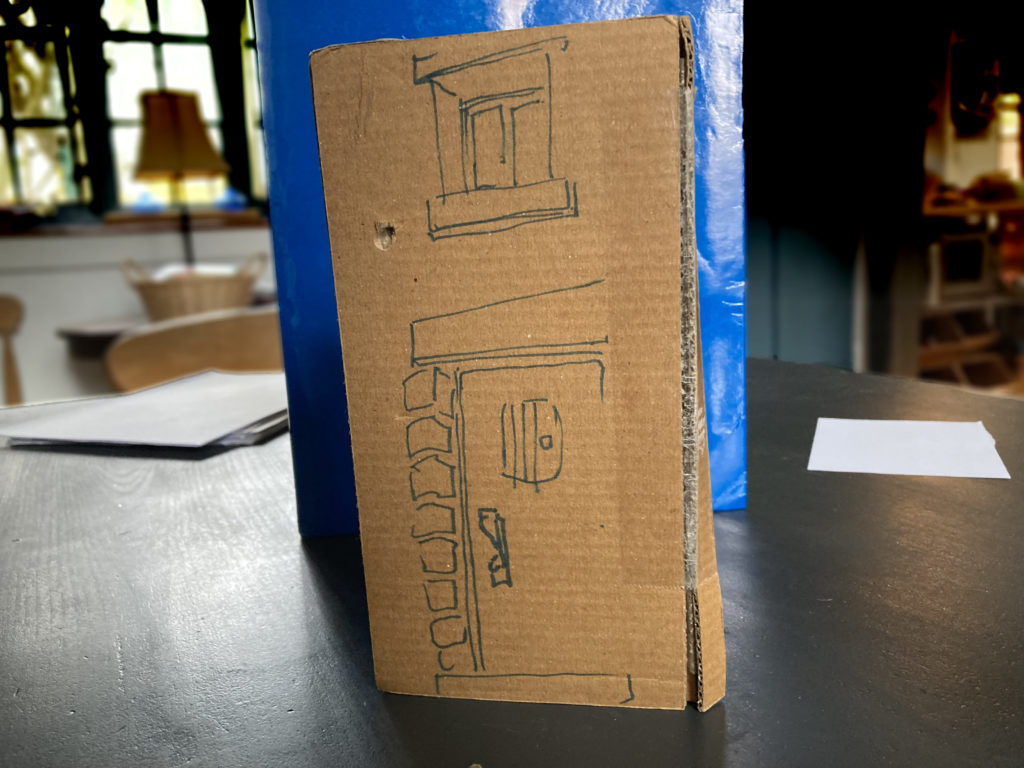
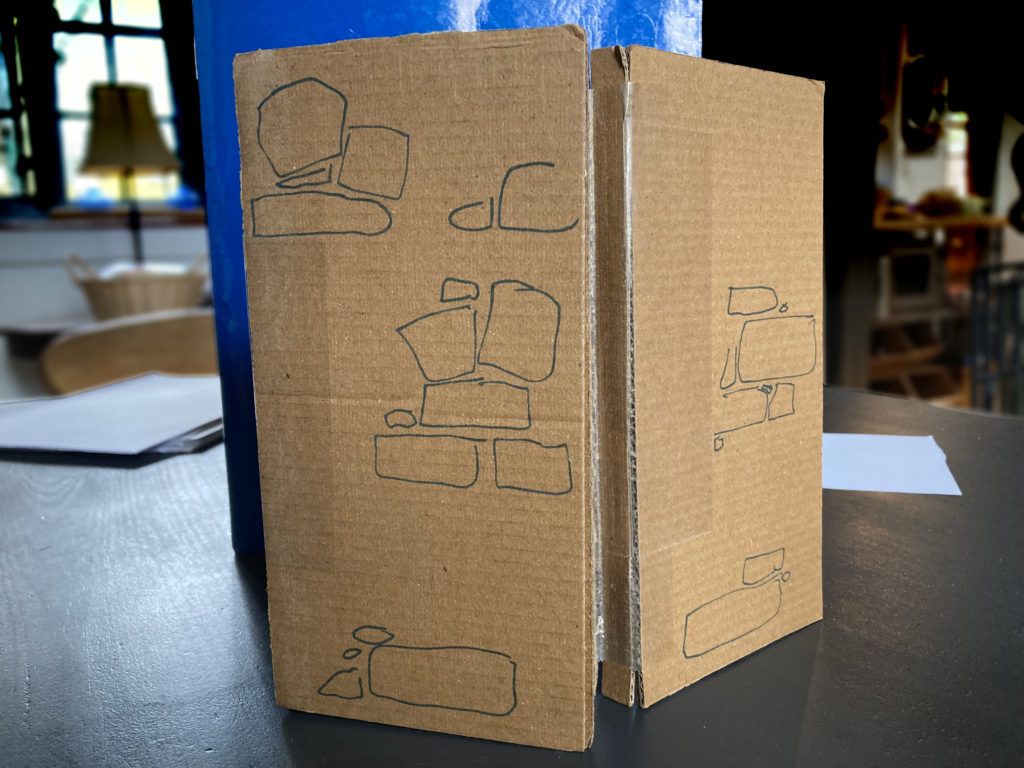
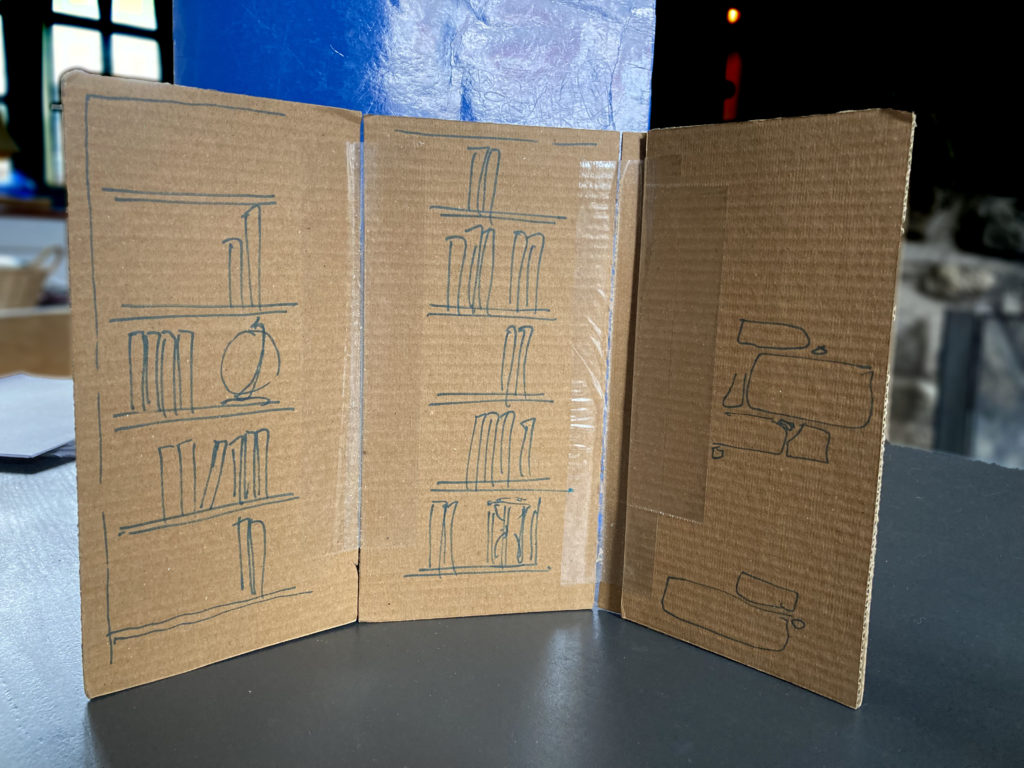
The crew’s goal was to have two of these combination flats ready for the middle school crew to paint at least a week before Tech Week. All materials such as fasteners, wood, and hinges were available for no production delay. The largest hurdle was how to translate the small hinge panel so one panel could overlapped two. I provided very little input at the start until they requested a conference to present their solutions before investing too much time and materials–an awesome process lesson for problem-solving to avoid such expenses. The crew provided a solution close to the expected design but were not completely sure how the hinge combination would provide for the overlapped panel. Still, they impressively gave an adequate reproduction with very little correction needed.
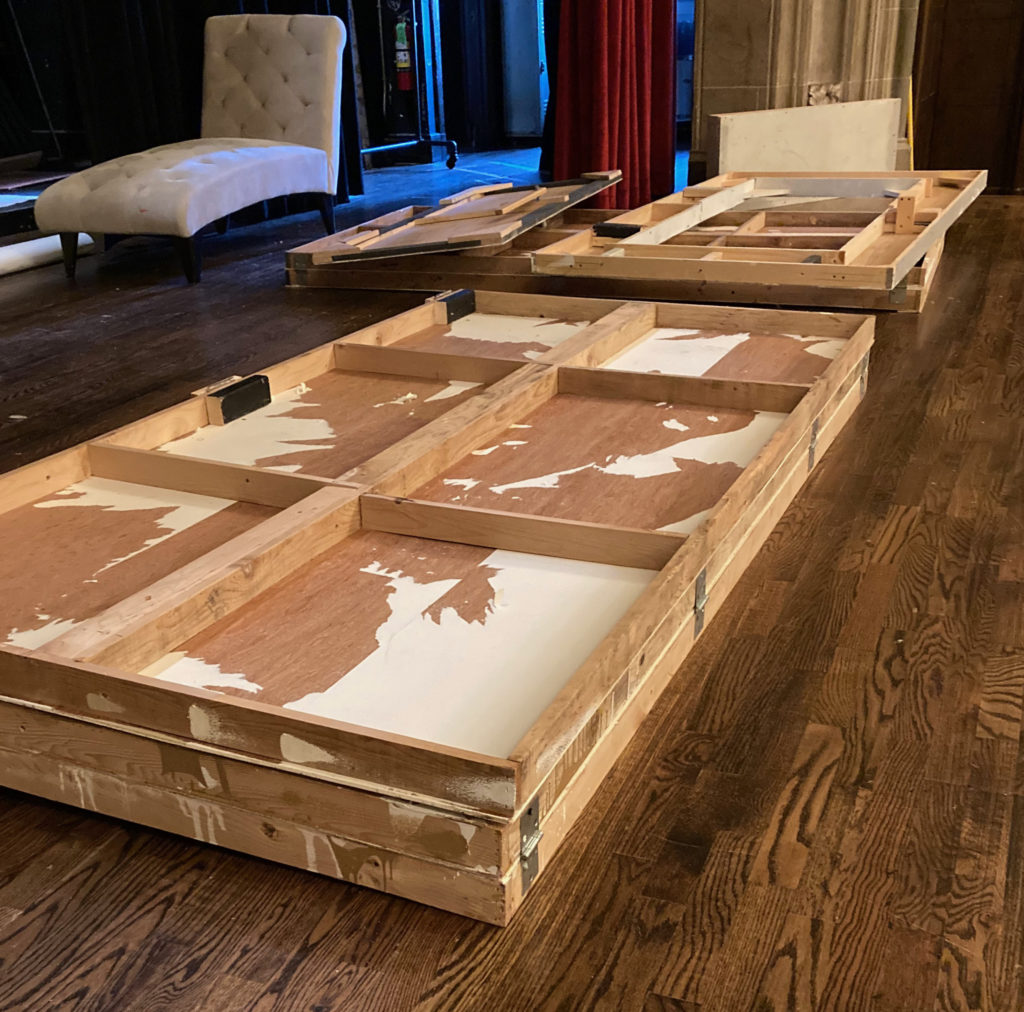
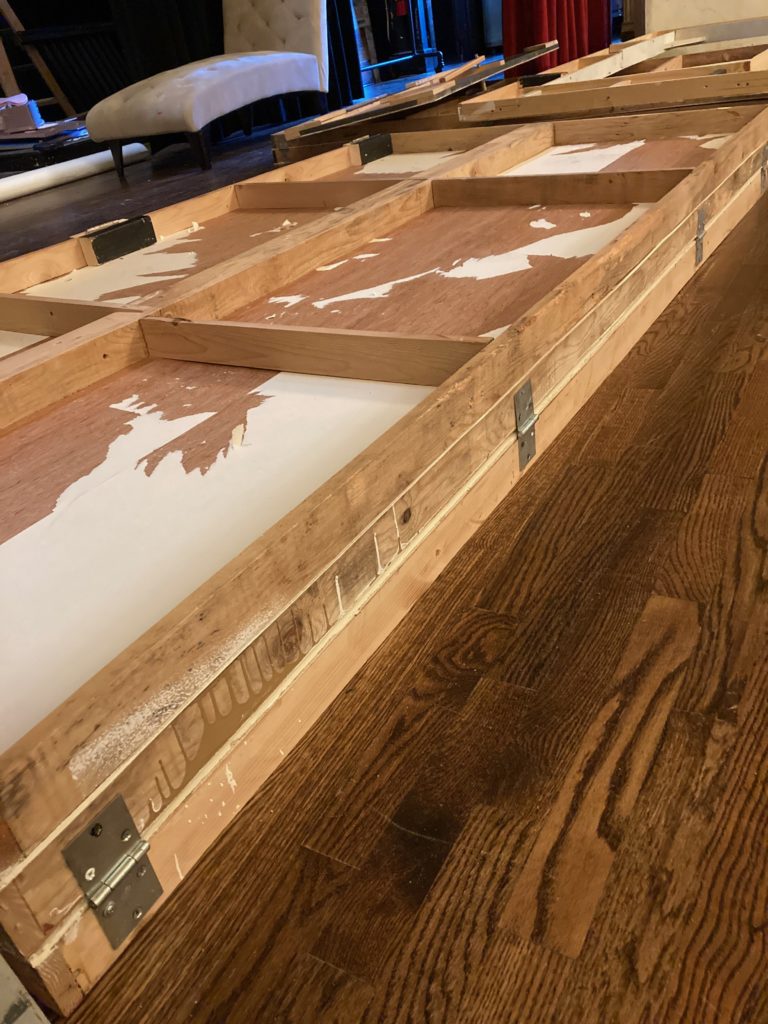
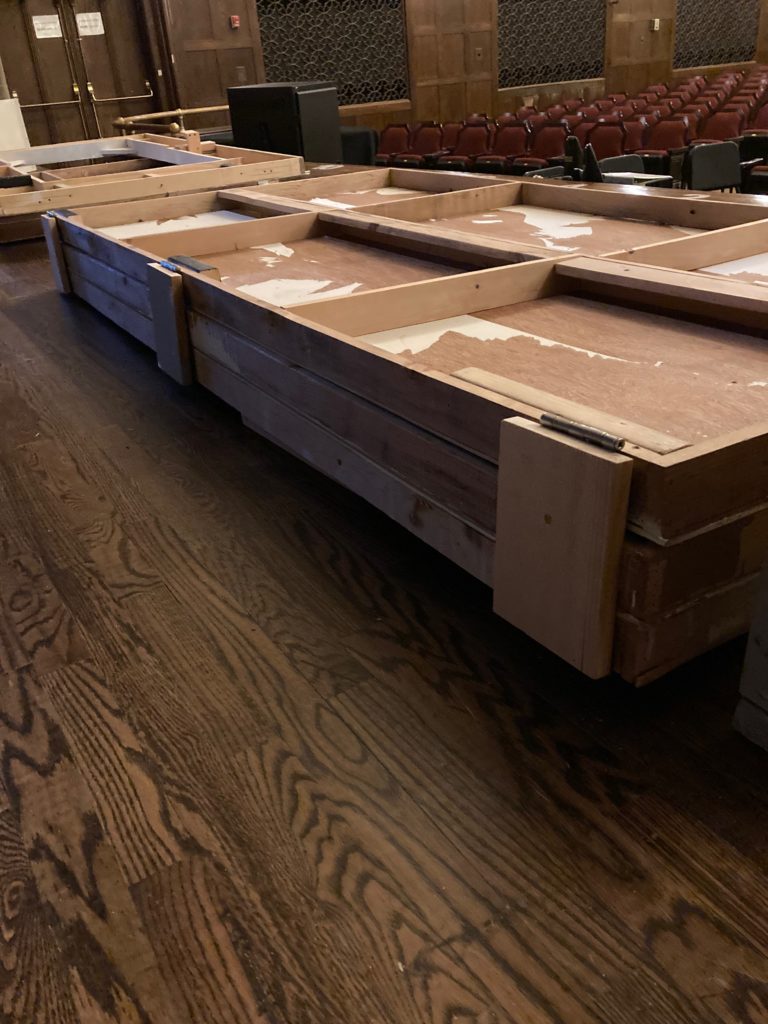



Other theater productions:
